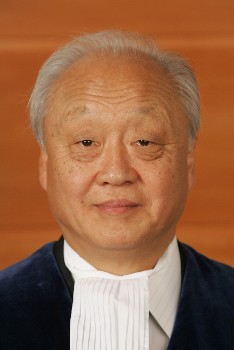The New York Times has an article in its Sunday magazine section by Tokyo Mango author Lisa Katayama about a “thriving subculture” of men who prefer “2D women” to real women, sometimes engaging in serious relationships with anime characters. On the website, the story is billed under the tagline “Phenomenon” which would give readers the impression that this sort of thing is common in Japan.
Seeing as it comes from America’s most prestigious and influential news outlet, the article has already been widely read (see here for a Japanese translation of a Korean-language summary), and reactions have ranged from uncritical acceptance of the reporting (wtf is wrong with Japan?!) to absolute incredulity (she just ripped off an Internet meme and borrowed from WaiWai so this “phenomenon” is completely overblown and is an example of the NYT exploiting Japan for cheap thrills).
Responding to the reaction, Katayama said on Twitter, “imho, responses to my 2D article reflect readers’ biases + issues more than the offbeat situation of story subjects.” So at the risk of revealing my biases plus issues, I am going to respond to this article.
But before I get to my overall thoughts, I want to point out what appear to be two small but important factual errors. While the article focuses on profiling individuals who are either examples of the “2D love” phenomenon or who promote the concept, at one point she cites some government statistics to bolster her claim that there is indeed a thriving subculture of men who literally think a pillow is their girlfriend:
According to many who study the phenomenon, the rise of 2-D love can be attributed in part to the difficulty many young Japanese have in navigating modern romantic life. According to a government survey, more than a quarter of men and women between the ages of 30 and 34 are virgins; 50 percent of men and women in Japan do not have friends of the opposite sex.
After I asked the author via Twitter where she got the numbers, she helpfully directed readers to “the gov’t agency that monitors population and social security” which in proper noun terms means the National Institute of Population and Social Security Research.
So I looked around to find where she might have gotten the information. The results? I could find nothing to credibly back up either of those statements, but there are survey results that show similar but critically different results. Let’s take them one by one.
Friends of the opposite sex
First, the good news – there is rough statistical backing for the claim “50 percent of men and women in Japan do not have friends of the opposite sex.” A 2004 study “The Japanese Youth” conducted by the Cabinet Office shows that only 43.7% of Japanese youth aged 18-24 reported having friends of the opposite sex.
The only relevant figures from the population institute I could find were from its most recent survey from 2005, which state that around half of unmarried men and women are not currently dating anyone of the opposite sex as friends, as a serious boyfriend/girlfriend, or as a fiance.
Still, both figures are much different from saying that half of all Japanese people have no friends of the opposite sex. As kids grow up they are much more likely to have platonic friends, though it’s true that this is less common than in the US. But that in no way backs up the argument that men and women are isolated in Japan. And as for the stat on single people dating, it really is a coin flip whether a person surveyed will be dating someone or not at the time. And it’s completely irrelevant to the “2D Love” story.
Are a quarter of Japanese 30-34 year-olds virgins? No way.
Now let me repeat the other claim: “According to a government survey, more than a quarter of men and women between the ages of 30 and 34 are virgins.”
Think about those numbers for a minute – if true they would be staggering news and quite possibly a major cause of Japan’s demographic problem. Yet in all I have read about the topic this article marked the first time I have ever seen that claim made. (Mostly it’s attributed to long life expectancies and low birth rates caused by late marriage, quality of life factors, etc.).
It turns out that the real statistic from population institute states that around 25% of unmarried 30-34 year olds are virgins. It doesn’t say anything about the population as a whole. Note that a separate survey finds that around two thirds of men and women have lost their virginity by the time they are in university, so I find it very hard to believe that another 15% or so won’t have met someone special in the intervening 10 years.
I’ll admit that I have not scoured the entire Internet, so there may be a survey that I just didn’t come across. So to give her the benefit of the doubt, let’s see if this claim is even close to realistic. According to the institute’s 2005 survey (PDF in English, page 15), single people with no kids aged 30-34 (defined as one-person private households) make up 34% of all households in the age group. On the other end, 54% of private households whose head of household is in that age bracket are married. That means in order for more than one quarter of all Japanese adults aged 30-34 to be virgins, one of the following must be true: either a) almost all unmarried people at that age are virgins (and we already know that’s wrong); or b) even a good portion of married people fail to consummate their marriages several years into their lives together. And that I am afraid is next to unfathomable.
The WaiWai Connection?
So what happened? Some have accused the author of using the notorious WaiWai as a source. WaiWai is a discontinued feature of Japanese national daily Mainichi Shimbun’s website that specialized in creative translations of Japanese tabloid articles. It was taken down in 2008 after angry Japanese internet users discovered it and found scores of misleading, exaggerated, and false stories depicting Japan as a perverted and even deranged society.
Katayama has claimed that the government reports were her sources and specifically denied using WaiWai. But thanks to James at JapanProbe, I have found the following June 2007 article that contains a passage very similar to one claim made in the NYT story:
The Japan Cherry Boy Association is facing a crisis after the National Institute of Population and Social Security Research revealed that almost one in four Japanese men aged 30 to 34 remains a virgin, according to Weekly Playboy (7/2).
Obviously I wasn’t there when she wrote the story, so I can’t tell where that number came from. But it could easily have come from this source as it makes the same mistake of omitting the key fact that the survey in question only covered unmarried men and women.
Getting facts like this wrong can lead to some unfortunate consequences. Already, the Korean daily Joong Ang Ilbo has posted a summary translation of the article in Japanese (and presumably Korean), complete with a verbatim repetition of the claim “more than a quarter of men and women between the ages of 30 and 34 are virgins.” Without a correction, this idea is likely to spread and might end up becoming a commonly cited myth about Japan, much like the similarly unrealistic but widespread claim that over 90% of Japanese women in their 20s own a Louis Vuitton handbag.
Without these numbers, the background for this story becomes somewhat undermined. While the isolation between men and women in this country is commonly cited by both foreign and Japanese observers, this gap tends to be reflected in the different ways adult men and women spend their time, particularly married couples. For some fascinating anecdotes on the gulf that opens up between housewives who never leave their neighborhoods and their husbands who never leave the office, read this fascinating interview with author Sumie Kawakami.
Overall thoughts
Aside from the statistics issues, I think Katayama and NYT did readers a disservice by making Nisan the focus of the story, because that turns the real story on its head.
Yes, there is a subsection of otaku who are unapologetic about their dedication to anime porn and proudly wear their virginity on their sleeves. But it’s a stretch to characterize all moe anime fans as walking a blurred line between normalcy and 2-D Love, and it’s even more of a stretch to equate all 2-D Lovers with Nisan, who is clearly in a class by himself. It would have been much fairer to start with the Okayama character. He is a collector of body pillows but isn’t public about it, which is far closer to the typical consumption pattern for these products, though even he is on the extreme side. Most American men have seen porn, but you know you’ve lost your way if you buy one of those fake rubber vaginas. In Japan, most men are probably more like economic commentator Takuro Morinaga who grew up on a diet of anime and maybe even dabbled in some “2D Love” content but never made the plunge into Nisan territory (btw, Morinaga is not one of “Japan’s leading behavioral economists.” He teaches at Dokkyo University but only has his bachelor’s and is best known as a populist TV pundit who commonly makes no sense).
It’s also important to note that since at least Evangelion in the late 1990s there’s been an element of eroticism present in most popular animated series aimed at teenagers and adults, and in general sexual content in manga and anime is much more common and accepted in Japan than it would be in the US. So most otaku may in fact own things Americans might consider erotica such as sexually explicit manga or suggestive figurines (not exactly 2D), but that does not make them Nisan- or Okayama-style 2D Lovers nor even place them outside the mainstream. The US and Japan also have the first and second largest live-action pornography industries in the world, so I think that makes both populations rabid 2D Lovers in their own ways. The key difference is the preference in Japan for underage girls (both real-life and 2-D) as objects of desire, a topic that’s not discussed in the article but deserves its own investigation.
To the extent that 2D love is a real phenomenon, it is driven by pop culture and consumption preferences led by people like Toru Honda and Momo who have books and pillowcases to sell. The market for this stuff is a relatively small niche of the overall otaku market, and I don’t see much of a serious ethos that goes far beyond a kind of brand loyalty (but please by all means prove me wrong; you could say the same thing about NASCAR fans but no one doubts NASCAR’s importance and influence on the identity of certain subsections of the US). And yes, the erotic body pillows are a popular accessory among that demographic. But Nisan and the few people who have an abnormal attachment to their pillows are merely the extreme example of what is largely a story of private porn consumption. And while I have never met or spoken with Nisan, how much do you want to bet he carries his pillow around either as an elaborate joke or to prove his otaku street cred? The whole idea of a proud life-long virgin has the air of a joke about it, and you can read any 2-channel thread on the topic to get an idea of how common it is for people to riff on this meme.
I want to be clear that I am not necessarily against this type of reporting. Far from it, I would say that all weird stuff everywhere should be documented and presented to the world. It’s an amazing world out there with countless stories waiting to be told. Lisa Katayama wrote an interesting story in her field of specialty, so I don’t hold it against her for publishing this article or trying to entertain by finding interesting aspects of Japan to present to the world. And as someone who loves to dig through government reports, I hereby offer that the next time she wants to write a story she is more than welcome to enlist my help if she wants to know what government studies are actually saying about Japan. It’s just in this case she got a couple of facts wrong and mischaracterized what I see as the real situation.
To be honest, if I didn’t notice the potentially groundbreaking statistics, I don’t think I would have bothered to write about this story. The “weird Japan” theme in the English-language media is what it is – viewed from the outside a lot of what happens in Japan does seem odd. And the New York Times is in the business of presenting the world to Americans in an entertaining and digestible manner. Producing stories that cast Japan as a backward country that got modernization wrong lets the readers feel better about their own country and confirm the basic rightness of the American dedication to social progress. But Japan is interesting enough without having to resort to exaggeration.
(Thanks to James at Japan Probe for help with some of the research in this post)








